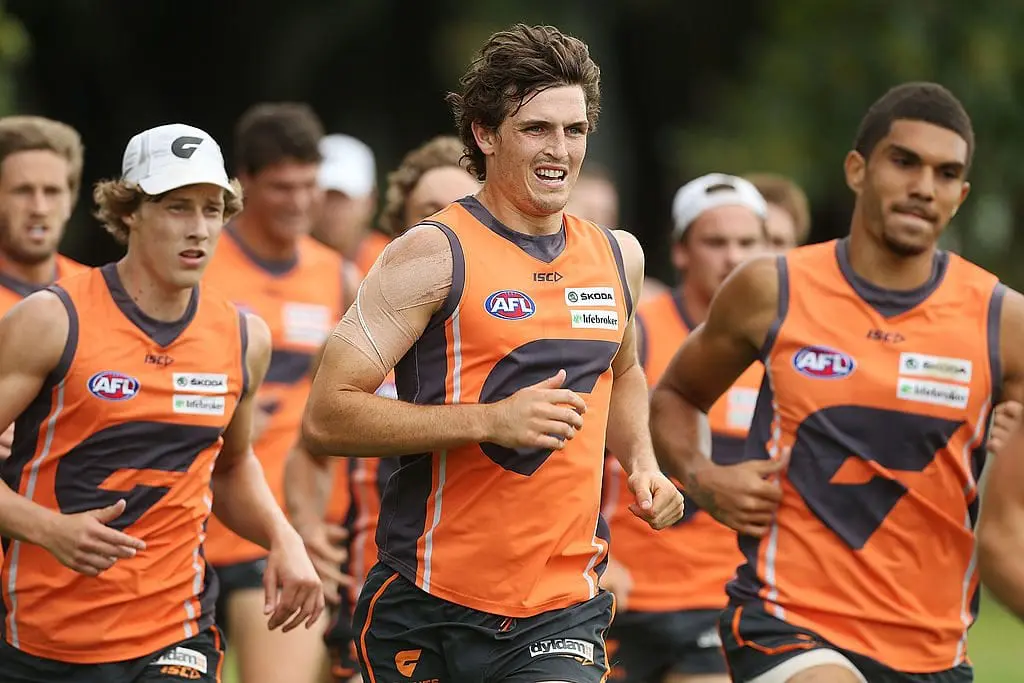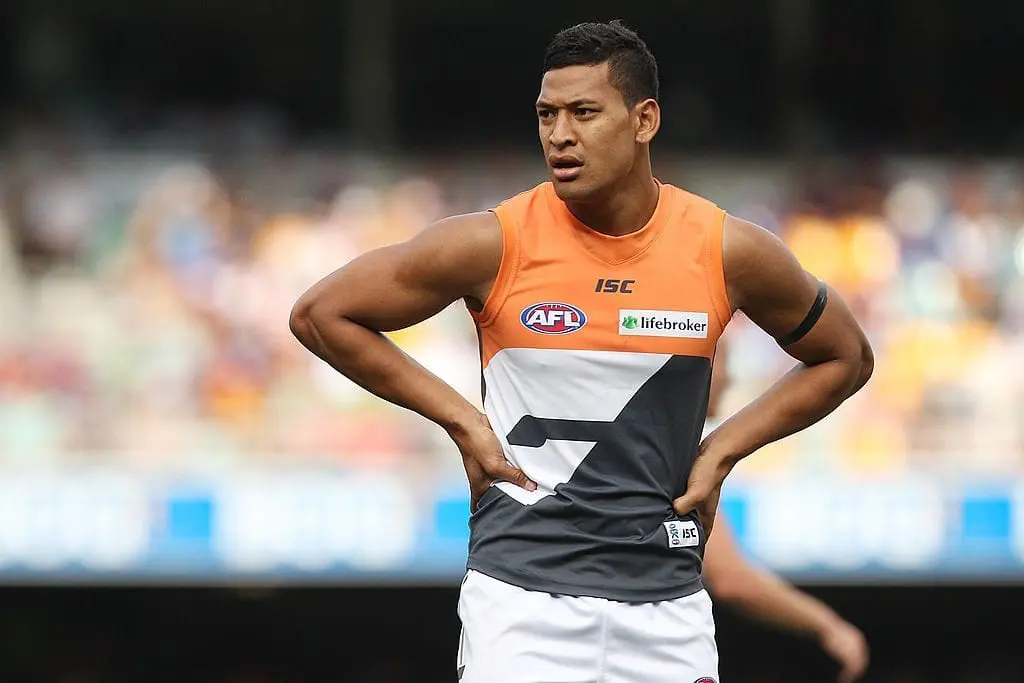It's common knowledge that Greater Western Sydney endured an extraordinarily difficult introduction to AFL football in their first two seasons.
When the Giants became the league's 18th club in 2012, they got bashed from pillar to post, finishing with a 2-20 record to claim the wooden spoon.
Things got even worse in their second season, winning just once on the way to back-to-back spoons.
Remarkably, those in charge of building the club expected, and planned, for things to be even tougher – bracing themselves to possibly go winless through three seasons.
“Sydney loves success – it's not good enough to just be competitive; you have to win, you have to succeed. And for us, success was being top-four for more than 10 years, which gives you enough chances to get to the big chance and ultimately win a few,” inaugural CEO Dale Holmes told Zero Hanger's AFL Team Builders podcast.
“We were prepared to trade off being competitive in the pursuit of ultimate success, but we knew it was going to be a few hard years.
“The list build and the strategy was to really hurt for the first three years – play kids, and surround them with a few older players. In effect, we didn't expect to win a game [in the first three years]. It was hard for some people to get their heads around, but we wanted to build an opportunity for 10 years of success from about 2015.”
For inaugural recruit Phil Davis, it was the second season that made him question his decision to join the Giants after emerging as an impressive young key defender at Adelaide from 2009-11.
“The first year was sort of like ‘wow, we won two games – how good is that'?” he said.
“It's not great fun, but it's fine, it's tolerable. We just had to hang in there and we'd get to the good times. But then the next year, we won one game. That was by far the hardest of my career. [I was thinking] ‘where are we going? What are we doing? Why aren't we improving'?
“We weren't even close for most of the year. The crowds [were poor] – in our first ever game, we had over 40,000 but the first game of 2013, it was something like 28,000, so I was starting to think the shine was coming off.”
While GWS has now established itself as one of the league's most consistent on-field entities and made some inroads into the local community in Sydney's west, as well as Canberra, there's no doubt the early years were exhausting, daunting and almost overwhelming for those tasked with building an Aussie Rules club in Sydney's west.
The Giants, or Team GWS as they were first called in the lead-up to their formation, were put on the AFL map on March 13, 2008 after the league won the support of the 16 existing club presidents to establish an 18th side based in Western Sydney.
Then, in late 2010, Team GWS was officially launched as the Greater Western Sydney Giants with the colours orange and charcoal and the motto Think Big, Live Big, Play Big.
Establishing a second team in Sydney was a daunting assignment, with Aussie rules footy about as well known in Western Sydney as professional cheese rolling. But as then AFL boss Andrew Demetriou said at the time, it was “a generational decision, and the success of AFL in Greater Western Sydney won't be known for 25 or 30 years but with a population of two million people, the AFL is serious about this venture.”
To help overcome the myriad hurdles in front of GWS, the league delivered its newest entity - the biggest and broadest range of concessions ever granted, and the club's shrewd back-room operators – including the likes of inaugural coach Kevin Sheedy, football manager Graeme ‘Gubby' Allen, list boss Stephen Silvagni, Holmes and his successor Dave Matthews – certainly capitalised on the hand they were dealt.
“We had a ‘book-end strategy' of young kids, and some older bodies,” Holmes recalls.
“We had some older bodies who were great leaders like Luke Power, James McDonald, Dean Brogan, Chad Cornes, who played for a year or so and then moved into coaching.

“One of the things we were really clear about was what type of people we wanted to bring to the football club, on-field. Steve Silvagni had identified Phil Davis and Callum Ward as guys who would really drive the footy club.
“And of course we brought in a lot of young talent. We always knew we'd lose a significant amount of players because our list numbers were going to reduce progressively, but we knew we would get replenished with future draft picks as compensation for losing players.
“So our ‘window' [of success] was elongated by the nature of the fact we were able to trade out players, but then get compensation and continue to bring in talent.”
The talent that made its way through the GWS doors for their debut season was immense: GWS' 17-year-old access selections included Jeremy Cameron, Dylan Shiel and Adam Treloar, while their zone selections included Josh Bruce, Anthony Miles, and Jacob Townsend.
Then the club was able to feast on the best of the 2011 draft, securing Jonathon Patton, Stephen Coniglio, Dom Tyson, Will Hoskin-Elliott, Nick Haynes, Toby Greene, Taylor Adams and Devon Smith, among others.
While the Giants' list build strategy focused on bringing the best young Aussie Rules talents they could get their hands on, another key signing was an athlete who had barely kicked a Sherrin before, but one who suddenly became one of the sport's highest-paid players - rugby league superstar Israel Folau.
Folau signed with Giants midway through the 2010 NRL season whilst he was playing for NRL club the Brisbane Broncos. He lasted just one season in the AFL, playing just 13 games, but his impact off the field, in the battle of hearts and minds in Sydney's west, was lauded by those within the Giants, and at the AFL.

Holmes and Davis both look back at the recruitment of Folau, following on from the signing of another rugby league convert, Karmichael Hunt, by Gold Coast a year prior, as a success.
“Obviously we didn't have a Gary Ablett Jnr who we could just roll out and everybody knows him – we didn't have a marquee player like that,” Davis said.
“But we had ‘Izzy' Folau. I think [his signing] confused a lot of the community, who were like ‘he's a rugby league player – what's he doing?' But it created a lot of discussion and his ability to get us in the papers and on television screens was enormous.
“I'm sure if you looked at his marketing value, his contract would've provided enormous value. Everywhere he went, he got stopped in our community.”
Holmes said the AFL was the initial driving force behind Folau's code-crossing.
“It was an AFL-driven initiative because they'd done the Karmichael Hunt initiative and the thought process for Greater Western Sydney was, there wasn't great awareness of the game and you needed some iconic personalities to build the profile and awareness of the club in advance of the product coming into market," he revealed.
“Sheedy and Folau played a really important role in building the profile of the club in the early days. From an on-field perspective, he didn't deliver, but he certainly delivered off the field.”
While, as the Giants themselves predicted, the club was battered from pillar to post on the field in their early years, they have emerged to become a truly respected team, featuring in six of the past eight finals series - a record nearly every AFL side would be envious of.
They have also established a bonafide rivalry with their cross-town big brothers the Sydney Swans and have successfully made inroads into the dominance of rival codes in Western Sydney, although that battle is a long way from being over.
As Demetriou said from the outset, the Giants in Sydney will be a multi-generational project, but after a little more than a decade, the signs are certainly promising.
For the full story of how the Giants came to be, listen to the AFL Team Builders podcast, which goes into further detail in areas such as:
- How the club settled on its famous ‘Big, Big Sound' song, written by Harry James Angus from cult Melbourne alt-jazz band The Cat Empire.
- Steven Silvagni's recollections of why the Giants were initially a very tough sell for potential draftees and recruits.
- Phil Davis on why he decided to join the Giants and his concerns at the club's early instabilities.
- How a trip to America inspired the Giants to set up a US college-style campus at Breakfast Point, which is regarded as one of the best decisions the club made in its establishment.
- Why the club was always confident in opening a ‘10-year window' of sustained success.






